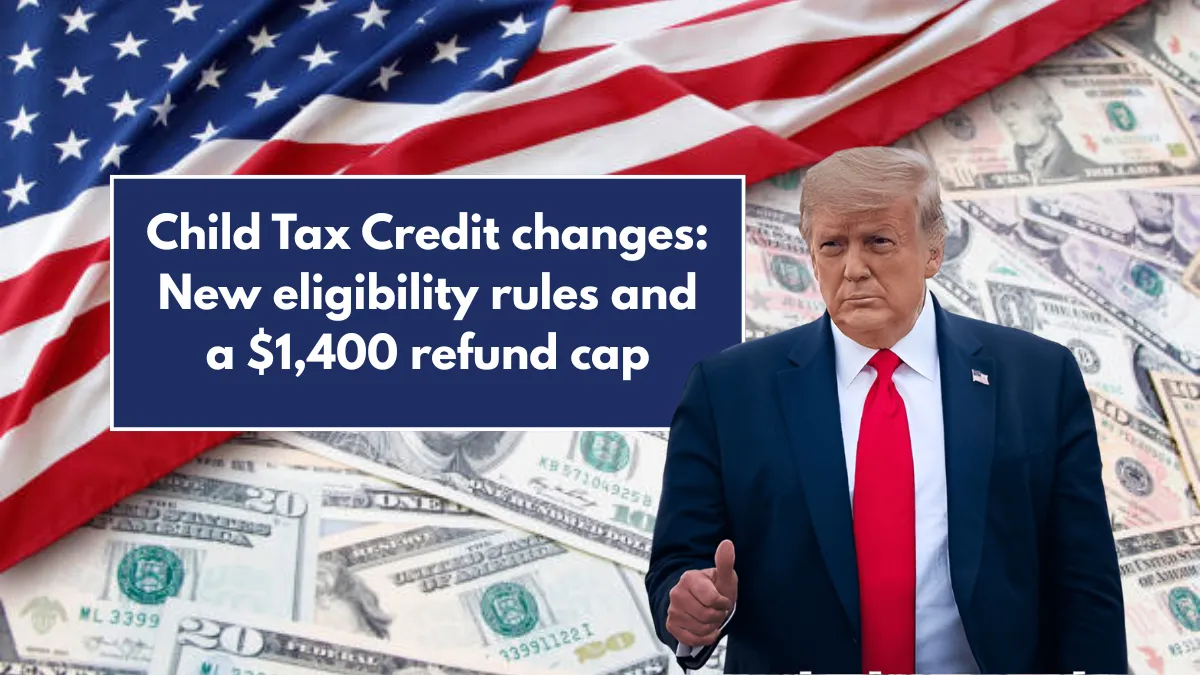The Child Tax Credit is expected to change soon, with new proposals coming from both the House Republicans and the Senate. The House plan, part of Donald Trump’s “One Big, Beautiful Bill,” would raise the credit to $2,500 per child until 2028. After that, it would return to $2,000.
On the other hand, the Senate suggests a $2,200 non-refundable credit starting in 2025, which would go up over time with inflation. These different ideas show how lawmakers are trying to help families with kids in different ways.
Refundable Portion Could Shrink for Families
One major change in both plans is the limit on the refundable part of the credit. The new cap would be $1,400 per child and would be adjusted yearly based on inflation.
This is a drop from the current $1,700 refundable credit available for the 2024 tax year. Also, families making $2,500 or less each year still wouldn’t qualify for the refundable amount. That means the lowest-income households would keep missing out on this part of the help.
New Rule Requires Social Security Number
Both the House and Senate proposals would add a new rule that says families must have a Social Security Number (SSN) to get the Child Tax Credit.
Lawmakers say this rule will make it easier to check who qualifies and ensure only eligible people get the credit. However, this change could leave out some families who were able to receive the credit under the current system.
Middle- and High-Income Families May Benefit More
According to the Tax Policy Center, the House plan would mostly help middle- and higher-income families. Those families could see up to an $800 boost in their tax credit. In contrast, families with lower incomes would likely get an average increase of just $350.
This gap is raising concerns that the new credit may not be fair, as many children in low-income households might still get less than the full amount.
What Happens If No New Law Is Passed
Right now, the Child Tax Credit rules come from the Tax Cuts and Jobs Act (TCJA) of 2017, which raised the credit from $1,000 to $2,000 until the end of 2025. If the new Republican proposals don’t become law, the credit would go back to how it was before.
That means only 15% of income above $3,000 would be refundable, and the maximum refundable amount would fall to $1,000 per child.
The Future of the Credit for Other Dependents
The TCJA also added a $500 non-refundable credit for other dependents, such as older children or adult family members. The House proposal doesn’t say what would happen to this credit, but the Senate plan wants to make it permanent.
If lawmakers don’t act, this credit will expire, which could hurt families that have dependents who don’t qualify for the regular Child Tax Credit.
Timeline for Lawmakers to Make a Decision
The timing for these changes is important. House Republicans want to get the plan through the Ways and Means Committee by Memorial Day and hope to get it passed completely by July 4th.
If the Senate plan moves forward, the $2,200 non-refundable credit and $1,400 refundable credit would start for tax years beginning after December 31, 2024. These dates show when families might begin to see the effects of these changes on their taxes.
FAQs
Will I get more money from the Child Tax Credit under the new plans?
It depends on your income level and which version of the plan becomes law. Middle- and high-income families may see a larger increase—up to $800. Lower-income families might only get about $350 more, or possibly no increase at all if they don’t meet income or SSN requirements.
Do I need a Social Security Number to qualify for the Child Tax Credit?
Yes. Under both the House and Senate proposals, a valid Social Security Number (SSN) would be required to receive the credit. This rule is new and may disqualify some families who were eligible under the current rules.
When will these changes to the Child Tax Credit take effect?
If approved, the new credit amounts and rules would start for tax years beginning after December 31, 2024. That means families would see the impact when they file taxes in early 2026 for the 2025 tax year.
What happens if Congress doesn’t pass either proposal?
If no new law is passed, the Child Tax Credit will go back to the pre-2017 rules starting in 2026. The credit would drop to $1,000 per child, and only a small portion would be refundable—15% of earnings over $3,000.
Robby is a dedicated finance blog writer with a talent for breaking down financial concepts into clear, actionable advice. He covers everything from debt management and credit tips to investing and retirement planning, helping readers make confident money decisions. Robby's goal is to educate and inspire others to build lasting financial health.




